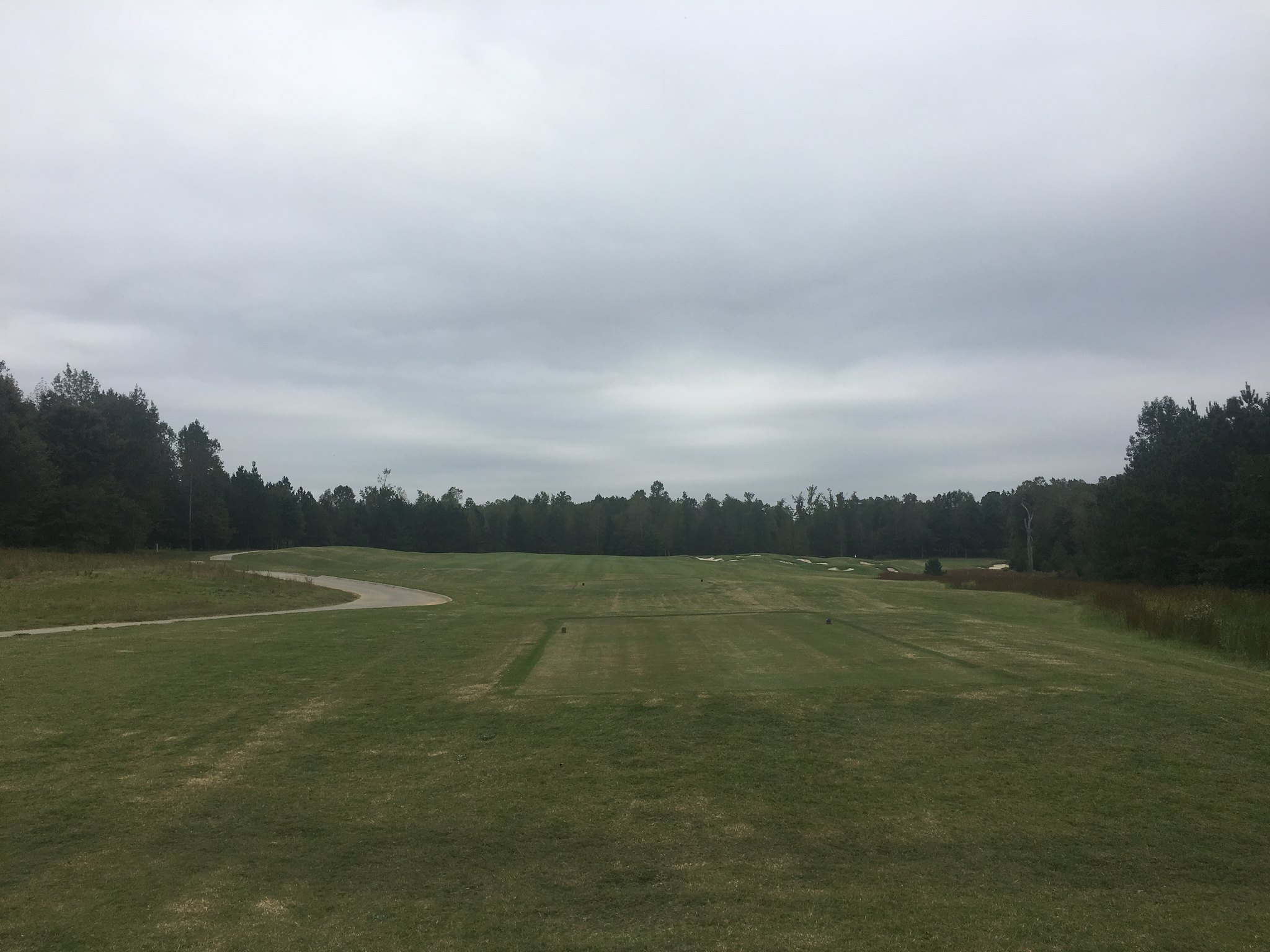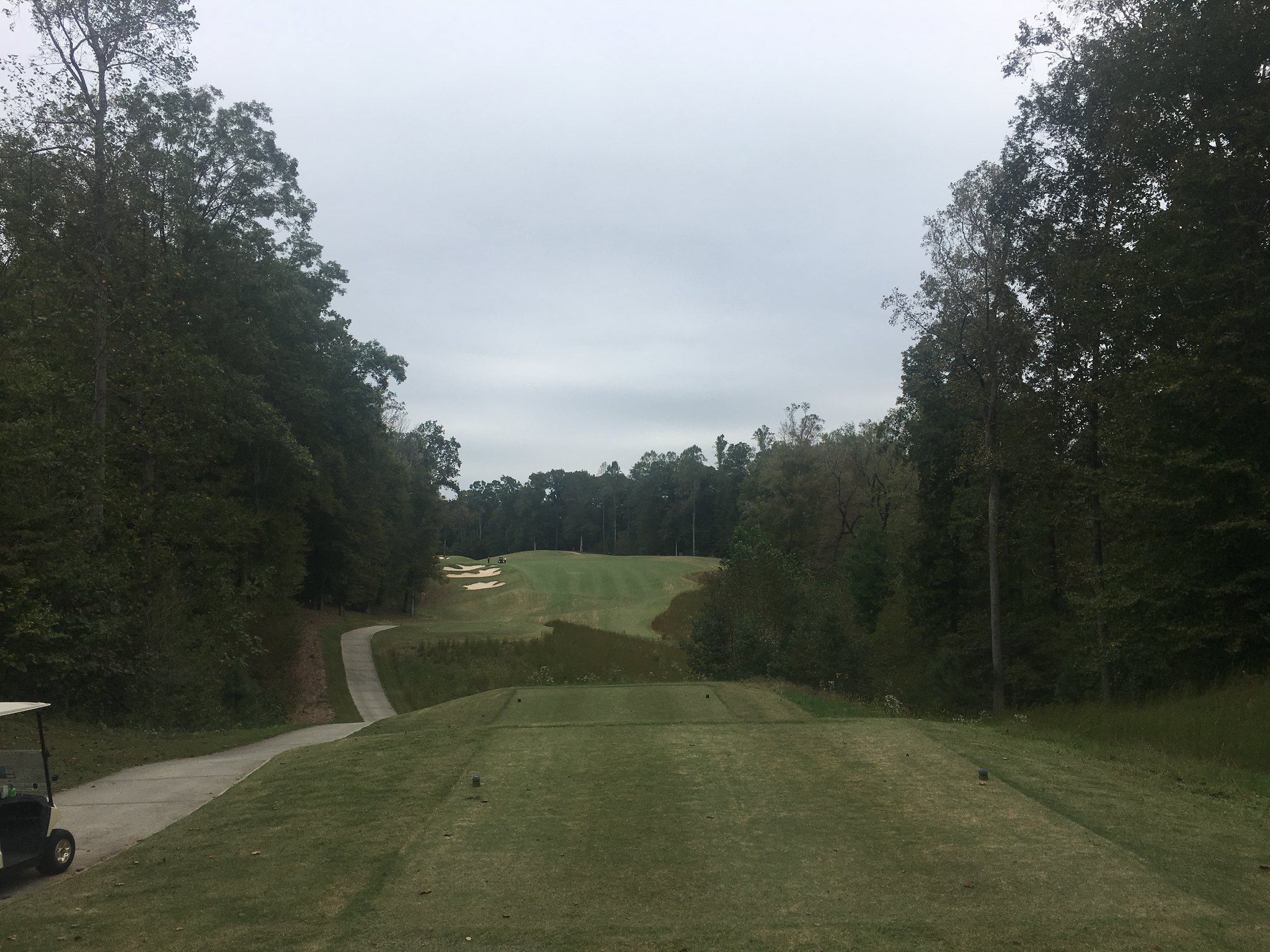Ross Bridge most certainly fits the mold of an ultra long golf course (ULGC). Topping out at nearly 8,200 yards, it is most certainly one of the longest courses in America, with this writer knowing of only the International (Pines) course in Massachusetts being longer. But one of the major negatives that courses like this face, along with another ULGC in California, Sevillano Links (7,823 on the card with ability to play longer), is the lack of variety in hole lengths.
A quick look at the cards for each course, Ross Bridge and Sevillano Links, both of which this writer has played, shows:
Listed in order Ross Bridge/Sevillano Links
Shortest Par 3: 207/191
Shortest Par 4: 454/386
Shortest Par 5: 571/553
Longest Par 3: 239/262
Longest Par 4: 518/509
Longest Par 5: 698/686 (Should be noted that the longest par 5 at Sevillano Links can play 709 yards)
Compare this to a course like Oakmont, which while coming in roughly 1,000 yards shorter than Ross Bridge, has greatly more variety:
Par 3: 183/288
Par 4: 313/500
Par 5 609/667 (only 2 par 5's on course)
What Ross Bridge and Sevillano Links miss in their quest for yardage is variety, though Sevillano Links has better variety than does Ross Bridge. But what should be studied is the likely reason for this lack of variety. Truth is, all those holes, while being part of ULGC's, all fall inside nice little boxes that most golfers find comfortable. In years past, a 518 yard or 509 yard par 4 would have seemed incredible, but now, we have seen a 525 yard par 4 in 2009 at the US Open and 523 at the 2011 US Open. Same with a 262 yard par 3, shorter than the listed par 3 at Oakmont.
The catch with the par 3 at Oakmont is that it does not fit within the comfort range for holes. It gets to the point that all but the longest of the long hitters must play a driver into the green and that is unsettling for many golfers.
No, as it stands right now, virtually all golfers are comfortable with seeing par 4's up to and beyond 515 to 525 yards; The International (Pines) has a par 4 that plays out to 567 yards, though it is unknown to this writer if that hole plays downhill or not. The truth is, however, that it takes a hole that long in order to prompt the high level golfer to hit a fairway wood into the green. But, same at the 288 yard par 3, a 567 yard par 4 does not fit inside the comfort zone of many golfers.
Par 5's go the same way. This year's US Open championship had a par 5 that was 670 yards from the back markers. However, the fairway had to be mown into such a narrow corridor as to be almost comical. Without such trickery, a 670 yard hole, for elite players on fairways as firm as those, will be nearly reachable in two shots and would rarely be approached with a club less than a short wedge (if we are to figure a 300 yard drive, followed by a 270 yard second shot, the player would be left with 100 yards to the green, hardly a difficult shot in most conditions). The par 5 13th hole at Ross Bridge is 698 yards from the back markers, yet this writer played it, from those markers, using Driver, 3 wood, Gap Wedge, again, hardly difficult. In order for a par 5 to play as a real three shot hole, requiring a 5 iron or higher approach, without some form of trickery, the hole would need to be greater than 770 yards in length, if we are to assume the same first and second shots listed above, followed by a 200 yard 5 iron. Again, though, that length would fall outside of a normal comfort zone for golfers.
However, what could be done, if we break out of those comfort zones, and create an ULGC that is also exceptionally varied? Have par 3's that can be approached with wedges, coupled with one that needs to be approached with a 3 wood. Par 4's reachable from the tee and also out to such a length that also requires a 3 wood approach. And of course par 5's that are reachable, or nearly so, on the second shot, but also one requiring 3 full shots, perhaps even a long iron or fairway wood approach.
Another comfort zone for golfers is the standard course make up of 4 par 3's, 10 par 4's and 4 par 4's. This, of course, limits what the designer can do because he is bound to a certain course make-up. As such, between this standard make-up and individual hole comfort zones, it becomes very difficult for the designer to design an ULGC without significant repetition. But what about breaking that up?
On a given site, were an architect to wish to design an ULGC, this of course assuming he had enough land and a site suited to such, it would be rather easy to create such a course, even using the standard make-up, if you break the conventional hole models.
A solid and varied set of par 3's might have yardages like: 140/190/225/285
Par 5's could go: 585/680/710/825
And Par 4's: 310/355/395/420/465/480/490/515/530/565
That comes to a yardage of 8,165 yards. Other markers could be laid out in front of that in order to get playability for any groups necessary.
But what could be done if we break the mold slightly and go with only 3 par 3's and par 5's?
Par 3's: 140/210/285
Par 5's: 585/680/825
Par 4's: 310/355/395/420/450/465/480/490/500/520/530/565
And this for a yardage of 8205.
Yet both of these courses had incredible variety in the holes. All because of being able to step outside normal comfort zones and designing holes that really do test elite golfers in their ability to hit fairway clubs into holes, while also testing their ability to hit short wedges.
It seems strange to look at elite golf courses and see the variety that exists in them and not attempt to recreate some of that when attempting to design an ULGC. The truth is, both of these, exceptional variety and exceptional length, can coexist and in all likelihood form a magnificent golf course. Someone should attempt this, rather than semi-boring repetition that exists on most ULGC's.
(As a side note, this writer greatly enjoyed his rounds at both Ross Bridge and Sevillano Links, he just thinks courses like this could be better if they had greater variety in the hole lengths)




